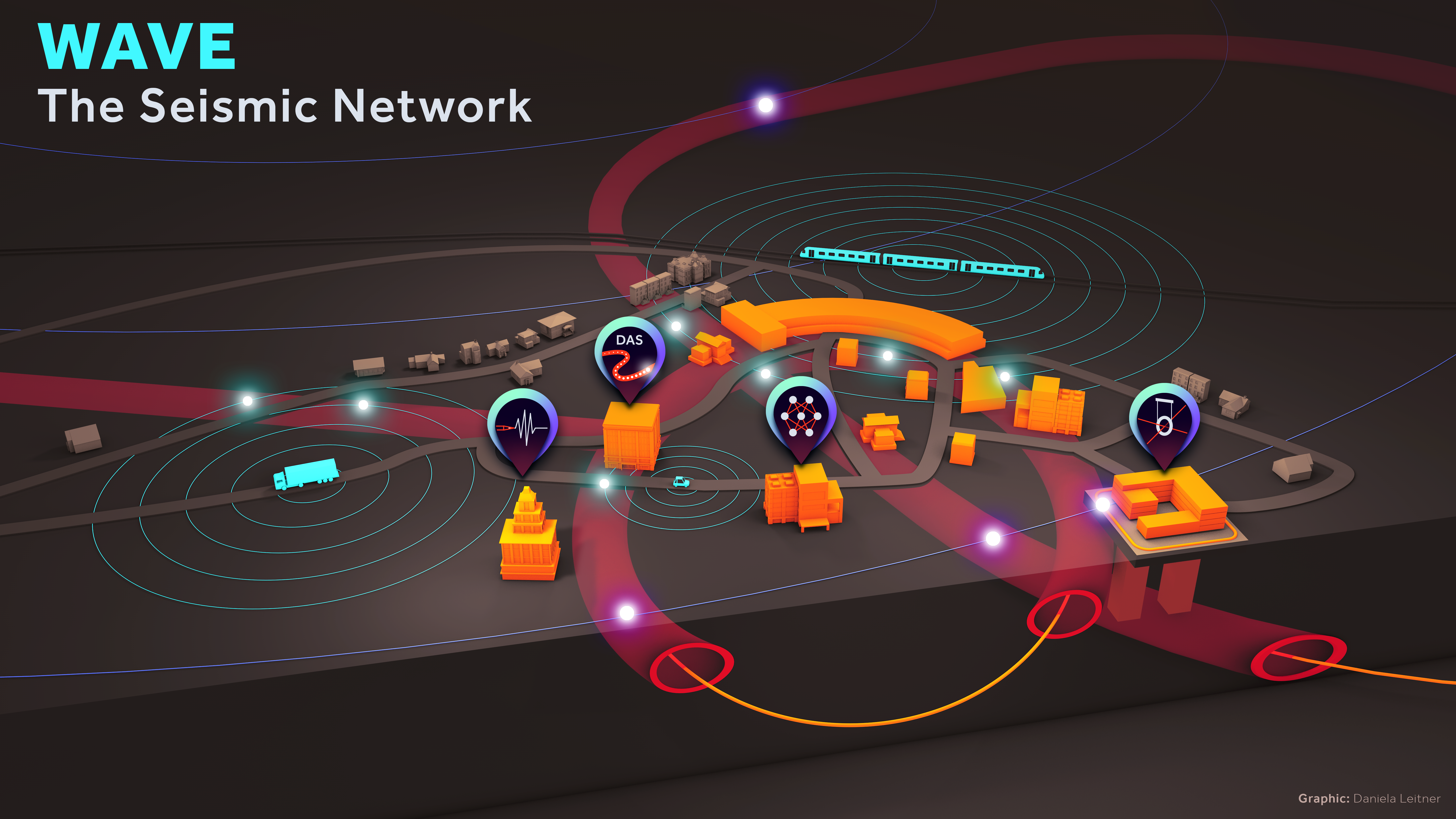
The undersigned support and intend to study and conceptualise the realisation of a seismic and geo-acoustic measurement network —WAVE— in and around the Science City Hamburg Bahrenfeld.
WAVE will be a revolutionary, unique, innovative and world-class infrastructure for geophysics and physics experiments and a core asset for the Science City and its partners.
Modern seismic sensors, especially distributed acoustic fibre sensors, and methods of artificial intelligence are revolutionising our capabilities to monitor, understand and predict seismic and geo-acoustic processes and disturbances. Creating a dedicated and joined network of such sensors in the Science City will provide unprecedented insight into anthropogenic and natural vibrations and how they couple into large-scale and ultra-precision measurement research facilities that are otherwise limited by such disturbances. The currently ongoing, long-term and comprehensive planning of the Science City makes this the ideal moment, place and environment to study, plan and develop such a seismic network.
WAVE strategically addresses, strengthens and connects three core research areas of the Science City, Freie Hansestadt Hamburg, and the associated research institutions:
- Smart city and urban systems research involving sustainability, climate change and urban safety (UHH, CEN, Cluster of Excellence CLICCS)
- Current and future large-scale research facilities for photon science (FLASH, XFEL, PETRA III/IV)
- Fundamental aspects of gravity and future gravitational wave detectors (UHH, DESY, Einstein Telescope, Cluster of Excellence Quantum Universe)
Due to the nature of such a sensor network and the capabilities of artificial intelligence for pattern recognition a heterogeneous network design will enable us to study a broad range of frequencies, wavelengths and phenomena. To this end, the network shall include various spatial domains and infrastructures (buildings, streets, railways, accelerator tunnels) and it shall combine translation, rotation and strain measurements, as well as other types of sensors.
The concept and following science shall be developed by a group of local partners (University of Hamburg, DESY, and others) who each contribute a set of complementary expertise. The network shall also benefit, and be coordinated with, the other local stakeholders in the Science City (such as XFEL GmbH, BWFGB, BVM, MPG).
Short-term goals include: the execution of proof-of-principle experiments on campus using, for example, existing and currently unused telecommunication fibres and the study of multi-dimensional correlations of seismic signals with high-precision experiments that are ongoing or under construction.
Studying the optimal placement and characteristics of sensors and to identify, acquire, install and operate such sensors is one of the core long-term goals, together with the establishment of common data transmission and processing pipelines, as well as creating data sharing and usage policies. This specifically includes the handling and storing of data according to data protection laws. Major scientific advances are foreseen in seismology and geophysical modelling, urban systems research, real-time machine learning, and, prominently, low-latency predictions for active disturbance reduction. WAVE shall also foster the development and integration of novel sensors, such as quantum-based inertial sensors, to continuously increase its capabilities. The internationally unique infrastructure and science network will establish best practices for vibration cancellation in large-scale and precision physics experiments, bringing new frontiers of precision measurements into reach, while simultaneously providing otherwise unattainable insight into the evolution of the Science City at and beneath its surface.
The undersigned agree to cooperate on these goals, to establish a regular exchange of information and to form a body that will seek representation and interfaces to relevant funding agencies and institutions.